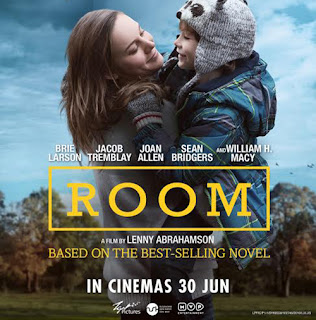And Then There Were None
Premise - Ten individuals unknown to each other are each summoned to the mysterious Indian Island under the instructions of the host U. N. Owen (a play on the word "Unknown.") Each of these guests has a secret, either directly or indirectly associated with an act of murder. Morbidly following the events of a nursery rhyme, each of the ten individuals is killed off one by one to pay for his or her crime, until there were none.
Review - The thing about mysteries is they are kind of like logic puzzles. Agatha Christie is known for being one of the best mystery writers of all time, and she certainly knows how to follow the particular logic associated with a good mystery: present mystery, present the suspects, present the clues, include a red herring, and solve your mystery. It's an incredibly formulaic, yet satisfying reading experience. But it's one that, due to its incredibly logical layout, lacks emotional depth.
This is not a fault of Christie. She's doing exactly what she is supposed to do as a mystery writer. This is my second reading of And Then There Were None, and still I could not discover who the killer was. Spoiler alert, but I remembered that one of the deaths was fake-out, I just could not remember which one. This strategy of falsely eliminating a subject, likely owing to the popularity of this novel, has been utilized in many other mystery stories (the horror film Devil comes to mind, in which a group of individuals is stuck in an elevator, and one is the devil... or even one of my favorite television shows, How to Get Away with Murder, has a season which somewhat reverses the plot of And Then There Were None, as each episode reveals a character who is not dead until finally the dead character is revealed). So, in the novel's attempt to present a difficult and enticing puzzle, it succeeded, and continues to succeed in a lasting way. I just can't find myself getting attached because as a reader I have no way of developing any emotional involvement with the characters. As an emotional person, I would rather be reading something else.
On another note, if mysteries are novels about employing logic, it is difficult not to become frustrated with the illogical acts of the subjects of the novel. Obviously, if they're getting killed off one by one, the way to be safe is to never be alone, or one-on-one with an individual who may be the murder. In a detached manner, I kept thinking about how if I was somehow in this situation, I would have suggested that everybody physically tie themselves together with some sheets, and never leave each other's sight - problem solved! Although, considering the mix of genders and the time period, perhaps that would not have been appropriate even in the most extreme circumstances.
Also let's not forget the racist undertones of this novel. The nursery rhyme was edited to include "Ten Little Indians" instead of the original... um... n-word... but even with the word Indians it's still somewhat offensive. Not to mention the blatant disregard for the lives of individuals of color. One of the murder suspects, Philip Lombard, is the only person who committed mass murder and left 21 Indians to die. Everyone else committed one murder, sometimes indirectly and/or unintentionally, and you're really going to say Lombard carries the same level of guilt?? The real murderer in this novel ended up killing a grand total of 10 individuals, 11 if you include himself, and still he murdered almost half the number of people Lombard murdered.
Nevertheless, it's a quick and easy read. Short mysteries are especially enjoyable because of the quick gratification you get from completing the solved mystery. This one is particularly interesting because there's no detective character to solve the mystery, so it goes unsolved without the author's extra note at the end from the point of view of the murderer. The premise is sadistically fun, and satisfyingly organized. I read this in two short sittings just out of sheer boredom last night, so no regrets. (72/100)
Quote -
"Ten little Indian boys went out to dine;
One choked his little self and then there were nine.
Nine little Indian boys sat up very late;
One overslept himself and then there were eight.
Eight little Indian boys traveling in Devon;
One said he’d stay there and then there were seven.
Seven little Indian boys chopping up sticks;
One chopped himself in halves and then there were six.
Six little Indian boys playing with a hive;
A bumblebee stung one and then there were five.
Five little Indian boys going in for law;
One got into Chancery and then there were four.
Four little Indian boys going out to sea;
A red herring swallowed one and then there were three.
Three little Indian boys walking in the zoo;
A big bear hugged one and then there were two.
Two little Indian boys sitting in the sun;
One got frizzled up and then there was one.
One little Indian boy left all alone;
He went and hanged himself and then there were none.
Though for one of the lines, I have also seen:
"Two little Indian boys fooling with a gun;
One shot the other and then there was one"
Which fits the events of the story better, so I don't know why my edition does not have that.
If you liked this book, I recommend Murder On the Orient Express!
Written by Agatha Christie
Published originally by Collins Crime Club



Comments
Post a Comment